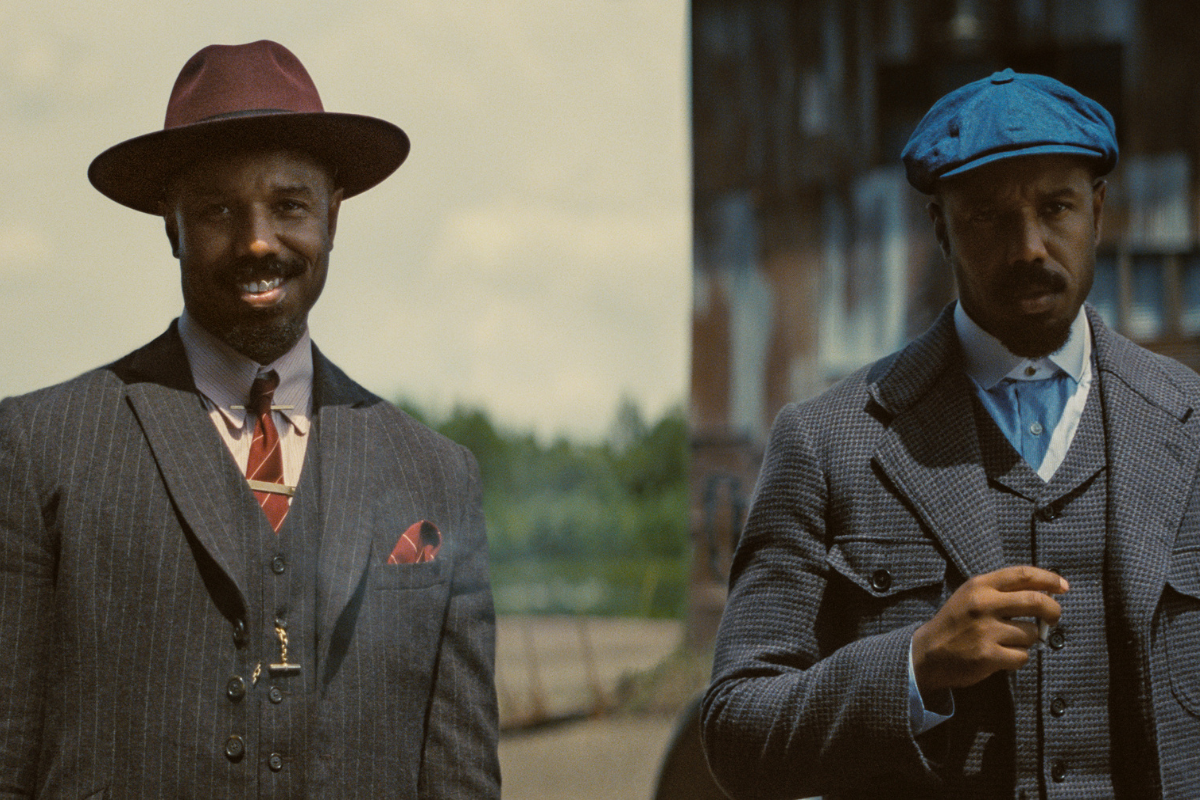WENDY’S LA4HIRE: Screenplay Marketing – What Makes Buyers Invest in Your Movie?
Great screenplay writing has strongly defined characters that attract financiers, studios, actors, and directors. Wendy Kram gives advice on creating memorable characters.
An established producer with extensive industry relationships, Wendy Kram is also the owner of LA FOR HIRE, one of the industry's leading consulting companies helping screenwriters sell and get their projects into production. Follow Wendy on Twitter @wendyla4hire.
One of the most important elements to attract a buyer for your feature screenplay is to create a compelling, memorable leading character. Creating a unique, attention-grabbing protagonist is a key ingredient to lure a star and third-party financier, such as a studio, network, streaming provider or investor. (The same principal applies in novels and biographies with respect to publishers and the manuscripts they decide to take on.)
In order for investors to determine whether or not they want to finance a particular project, they need to maximize the odds that they will attract a large audience and get a return on their investment. If you were in their shoes, and doling out a lot of dough, you’d want to minimize your risk. Today, a medium-budget movie can cost $20 million, plus another $20 million in print and advertising to promote it.
That’s A LOT of money! Short of having a pre-established brand with a built-in, guaranteed audience such as a best-selling novel or a comic book action hero, which only studios with deep pockets can afford — what is the tipping point that will make an investor want to finance a project?
The answer is simple – they fall in love with the screenplay. But what makes people fall in love with your script? They may feel the subject matter is important, but above all, they fall in love with a character, become deeply intrigued and drawn into his or her journey. The same is true for actors and directors. With a compelling character, the investors hedge their bets, feel more confident in the ability to attract a star. Attaching a star in turn provides further assurance the film will perform well at the box office and they will receive a return on their investment.
With lower budgeted films, it may be easier for an investor to take a risk by not having a well-known lead or ensemble cast because there’s less at financial stake. However, the low-budget movies that do well without name actors tend to be genre films, such as psychological thrillers and horror movies. Or a film without name actors may be directed by a well-known director, so the investors knows they can promote that filmmaker's name recognition and brand.
Even so, most auteurs such as Guillermo del Toro, Danny Boyle, and Martin McDonough understand the power of creating compelling central characters whether they are a mute young woman, an orphan from the slums of Mumbai, or a mother outside of Ebbing, Missouri seeking justice for her daughter.
There may be exceptions, but for the most part, the common denominator to attracting investors and name talent (director, actor, star producer) is to create a riveting character.
Write a compelling hero or heroine in a well-crafted screenplay, one that makes a visceral connection with your reader, and your script will start drawing attention.
The following are some TIPS to help make your characters stand out and attract producers, agents, actors and directors.
Define Your Characters through Strong Introductions
When introducing a character, make sure to convey something unique and compelling about him or her so that the character can “gel” in your readers’ mind and make a lasting impression.
A compelling character on the page evokes a buyer's ability to visualize the character on the screen, and a star who will play that role.
Look at the following poor examples of character intros:
JOE [30] enters the room. Or… JOE [32] tall brunette is wearing jeans and a blue shirt. I've read many scripts with this kind of generic description, and typically, these are tell-tale signs of less experienced writers.
Agents, actors, directors, studio, network and cable company executives and their staff (also known as the gate-keepers) receive thousands of scripts a year. If you put yourself in their shoes, would you continue reading a screenplay where a principal character is flat, not defined, or introduced in a generic manner when you have a stack of 20 other screenplays on your desk that need to be read?
It’s important to capture their imagination right away with a protagonist whose personality makes an impression.
Most likely you've been living with your characters for many months, maybe even several years. Therefore you know them really, really well. But just because you do, you can't take for granted that the person reading your screenplay for the very first time is going to know them as well as you do or find them as interesting – unless you define them clearly.
The person reading your screenplay or pilot is coming to your project with no knowledge whatsoever of your characters and their world. Therefore, it’s up to you to make sure you illustrate what’s unique and compelling, so that the person reading your screenplay will not only want to read it in its entirety, but recommend it to his or her boss. The end goal is to have your screenplay go all the way up the food chain and attract all the elements (director, cast, financing) to go into production.
In contrast to the first examples above, let’s take a look at more effective character introductions:
JOE, a twenty-something year old with all-American good looks, drives down the freeway in his mustang convertible, singing at the top of his lungs to Metallica.
HENRY, an octogenarian wearing a lopsided toupée, drives down the freeway in a 1980’s Pontiac, crooning at the top of his lungs to Frank Sinatra’s “I did it my way.”
SUSIE, a perky blond in her mid twenties, enters the classroom in a pink Channel suit, oblivious to the stares she elicits from the other students, all dressed in jeans and sweats.”
DIXIE, a feisty blond in her mid-sixties, enters the bar wearing a form-fitting dress about two sizes too small for her voluptuous curves.
The age, activity, attitude, type of music a character listens to or the style of clothes they wear begins to paint a vivid picture of your character and his or her unique personality, e.g. insecurities, neuroses and attitude. These types of descriptions not only connect us with your characters, but also help us remember them. Several pages later when your readers haven’t seen your protagonist (or another particular character) for a while, and you’ve introduced a whole myriad of other characters in between, you don’t want your reader pausing and thinking, “Wait a minute, who’s Joe again? I better go back and re-read the first time we met him.”
Side note: the above advice does not necessarily apply to day-players, e.g. generic, non-recurring characters such as a waitress, nurse, receptionist, valet, protestor, and so on who may serve as background or may only be in one scene. Going into too much detail with an insignificant character will clutter your script and may confuse your reader into thinking that this character will eventually figure more prominently in your script.
In Lethal Weapon for example,Shane Black's big spec feature sale back in the day, when we first met his protagonist, he was sitting in his trailer with a gun in his mouth, pondering whether or not to pull the trigger. While Lethal Weapon was an action film and didn’t have the cache of being based on underlying source material, such as a Tom Clancy or Robert Ludlum novel, the script was so well-written and the characters so well-defined, it immediately grabbed readers’ attention, sold for an unprecedented amount of money at the time, and made Shane Black one of the most sought-after screenwriters in the industry.
The introduction also set the foundation for hero's atypical methods of cop work, such as saving someone from jumping off the ledge by handcuffing himself to that person. If the guy jumped, he’d take our hero with him. We understand why our hero responded to the crisis in such an outrageous manner because we already knew he was about to commit suicide himself and had nothing to lose. These actions defined the character as unpredictable and perhaps reckless but also admirable for his derring-do. We all know the rest. The movie became a hit, launched Glover and Gibson to superstar status and became one of the industry’s most successful franchises.
A vivid character intro is just the tip of the iceberg, inviting your reader to get to know your character better as you continue to build and unfold his or her particular flaws, neuroses, dreams and aspirations, failures and disappointments, conflicts and obstacles and how he or she overcomes them or succumbs.
In writing your script, make sure you start by knowing your leading character(s) really well, their dreams, strengths and flaws, where they start out at the beginning of the film and where you see them winding up at the end — smarter, overcoming a fear, getting married, gaining the confidence to defeat a bad guy, getting a promotion at work, or having the confidence to quit a thankless job and follow his or her true passion.
Whoever your protagonist is, start with a compelling image, moment, or scene that defines him or her and makes the reader — agent, executive, actor, director, or financier — fall in love with that character, or identify with them strongly and become invested enough to want to see how their journey plays out.
Related Articles:
- More Wendy's LA4HIRE articles by Wendy Kram
- Alt Script: Three Ways Alt-Script Writing Can Improve Your Spec Scripts
- Wendy’s LA4HIRE: Essential Ingredients to Writing a Screenplay that’s Powerful
Get more screenwriting success tips from Wendy Kram in her OnDemand webinar12 Top Tips to Write a Screenplay That Gets Noticed by Agents and Production Companies
Wendy Kram is a producer and the owner of LA FOR HIRE, one of the industry's leading consulting companies for screenwriters, filmmakers and production companies, assisting them in developing, packaging and selling their projects. Creative Screenwriting Magazine ranks her in the Industry’s Top 3 Picks for “Best Script Consultants” with expertise in marketing. She is a respected, working producer with multiple features and series in active development, and she is responsible for securing high six-figure deals for her clients. To learn more about Wendy’s services, success stories and how she may be able to help you advance your projects, email wendy@la4hire.com.







